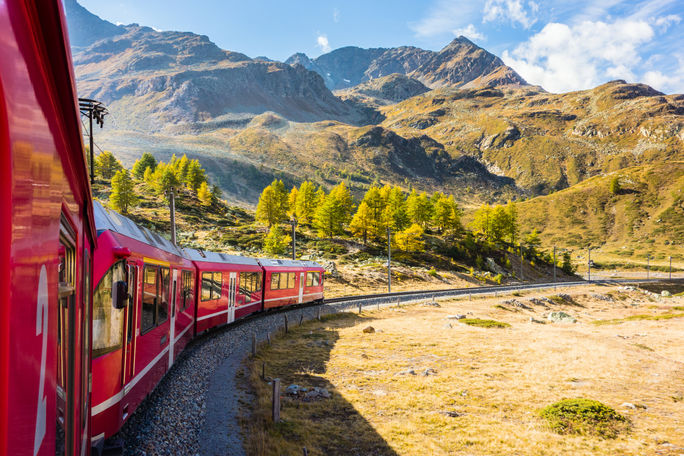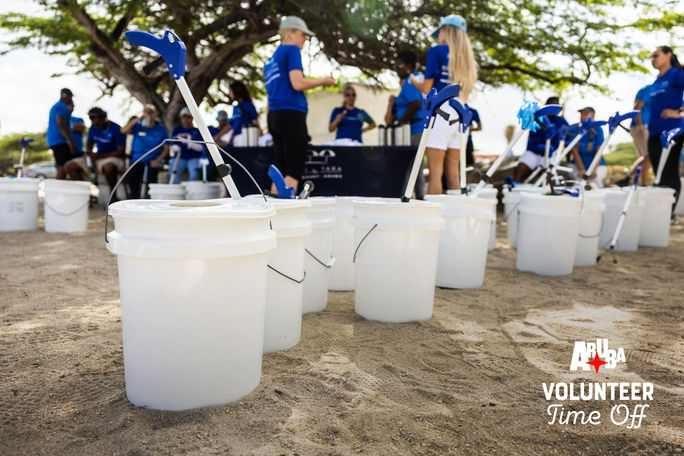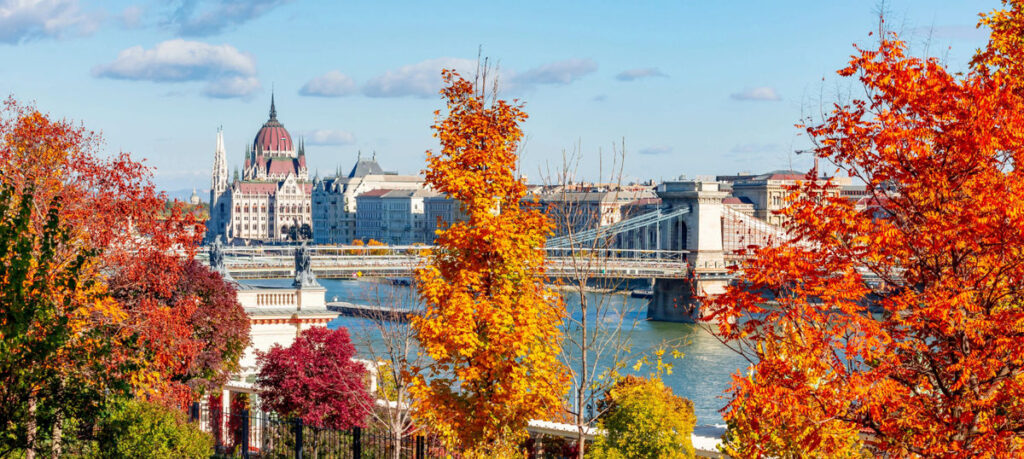
Autumn is an amazing time of year, often filled with brisk air in the lungs, crisp, crunchy leaves underfoot and a decidedly energizing new outlook on life and the rest of the year ahead.
It’s also a season when we can’t help but look at the changing world around us: the natural world brings chillier air, that’s true, but it also brings new colors, harvestables and experiences, reminding us that when your personal world might seem static, the natural one is anything but.
So here’s your handy guide to inspire you, the traveler, on your way this fall. While we talk about sustainability near Earth Day in the spring, it’s important to remember that sustainability can be practiced year-round, at home and abroad.
Check out our ways that you can support the world around you while traveling this fall.
Choose Your Destination Wisely

Fall colors on Lake Padden in Bellingham, Washington. (Photo Credit: Adobe/David)
This is perhaps one of the biggest sustainability steps you can practice: from reducing your carbon emissions by picking closer-to-home destinations or staying away from heavily touristed areas, choosing your destination with sustainability in mind can look very different depending on the specific trip and people traveling.
If you’re interested in visiting a national park, for example, do your research on which ones are the most heavily visited during the season, and make a list of similar but less crowded alternatives for you to visit instead.
If you’re planning a European vacation, try to spend a bit longer in each destination you visit, which will cut down on your trip’s carbon footprint and allow your chosen destinations to receive a bit more benefit from your presence.
Pick Certified Sustainable Accommodations

The Bio- and Wellnessresort Stanglwirt in Austria, a new Beyond Green member property. (Photo Credit: Beyond Green)
While it can be challenging to trust sustainability certifications, there are a few that provide better peace of mind when it comes to choosing hotels than others.
The first is the World Travel & Tourism Council’s worldwide Hotel Sustainability Basics initiative, which provides hotels with a path towards becoming more sustainable. Over 5,000 hotels across the globe have joined the program.
Another is Green Key Global, which was created in 1994 aligned with the UN’s Sustainable Development Goals.
Specific brands are also launching their own sustainable brands, especially when it comes to luxury travel: Beyond Green is Preferred Hotel Group’s collection of independently owned sustainable luxury lodgings and hotels.
Choose Low-Emission Travel & Transit Options

Train travel with Rail Europe. (Photo Credit: Rail Europe)
Every method of travel, besides hiking, creates carbon emissions, yet there are ways to reduce them. Long-haul flights, for example, emit more carbon emissions than train travel, while taking public transport is more beneficial in the long run than renting your own car while in a destination.
Making these types of decisions during the travel-planning process also allows you to think of your travel experience in a new way: instead of going with whatever is the most convenient, spending a bit more time on a train or taking the subway in your chosen destination might provide an experience or new outlook you would never have discovered if you’d gone a more traditional path.
If you’re traveling by cruise this fall, you might consider a cruise ship with a smaller passenger count, as they generally produce less emissions and don’t over-stress ports with thousands of passengers a day.
Support Local or Certified Sustainable Tours & Experiences

Travelers and their guides pose for a photo on Day 13 of an Everest trek with Intrepid Travel. (Photo Credit: Intrepid Travel)
Local tour guides and operators, certified B-Corps or other brands with well-known labels are often the best ways to support the best in the business.
Whether you’re trusting a tour operator like Intrepid Travel, which has a very high B Corp rating, or a locally owned and certified sustainable operator for a short day tour, supporting local really does make a difference, as locals recognize the importance of caring for local wildlife and their local community.
Certified sustainable tour operators or B Corps are also more likely to offer electric vehicles instead of gas or diesel and partner with more responsibly run accommodations.
Leave No Trace at Parks & Outdoor Areas

Pipestone National Monument Circle Trail. (Photo Credit: National Park Service)
Fall is one of the best times of the year to get out and be active in nature, when the colors change, animals migrate and the bugs finally go dormant for the winter.
While you’re out, we recommend practicing the Leave No Trace initiative, which focuses on seven core principles: plan ahead, travel and camp on durable surfaces, dispose of waste properly, leave what you find (even if it’s amazing! Pictures are always welcome souvenirs, remember), minimize campfire impacts, respect wildlife and be considerate of others.
If you’re a camping or hiking newbie, or just want to learn how to become a better wilderness explorer, check out Leave No Trace’s website and research your specific destination or park’s recommendations for visitors.
Participate in Voluntourism Initiatives

Travelers and locals participate in a beach cleanup in Aruba. (Photo Credit: Aruba Tourism Authority)
Voluntourism initiatives are popping up all around the world, from Copenhagen’s CopenPay program, which rewards travelers with free experiences by choosing sustainable travel methods or participating in a voluntourism initiative to Aruba’s new Aruba VTO program, which provides discounts for stays at participating accommodations when travelers participate in a selection of voluntourism initiatives, like a beach clean-up.
We recommend doing your research on where you’re going this autumn and spend some time giving back to the local community in some way. Besides making an impact, you can enjoy meeting locals, trying something new and feeling good about doing good!
Rethink Single-Use Plastics

Traveler waiting at a train station with a reusable water bottle. (Photo Credit: unai / Adobe Stock)
When packing, it can be easy to bring out a few single-use plastic bags or zipper bags to pack everything from liquids to shoes—yet the easiest way to save on single-use plastic usage is to simply reuse what you’ve already used during previous trips.
It’s the same way with using a reusable water bottler instead of a typical plastic one.
This is one of the simplest ways to reduce your consumption of single-use plastics, which often end up in landfills and will take centuries to biodegrade. Instead of heading to the airport and purchasing a single-use plastic bottle after going through your security screening, bring an empty bottle from home instead, and fill it up after security.
Besides cutting down on plastics, bringing your own bottle ensures you won’t have to worry about where your next drink is coming from, or how you might go about in search of another plastic bottle.
For the latest travel news, updates and deals, subscribe to the daily TravelPulse newsletter.

